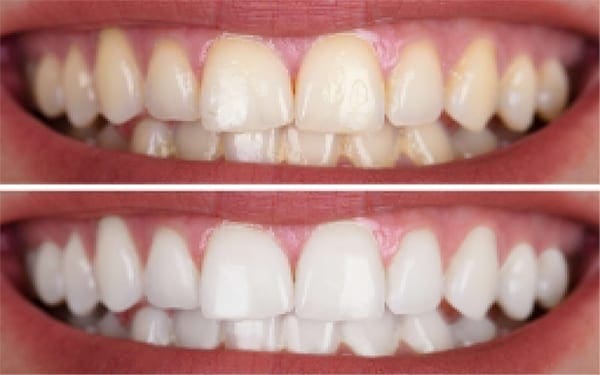
A bright, white smile is often associated with health, youth, and confidence. It’s no wonder that tooth whitening has become one of the most popular cosmetic dental treatments available today. Whether you want to get rid of stains from coffee, wine, or aging, tooth whitening can help restore your smile. But with so many options on the market, how do you know which is right for you?
In this post, we’ll explore the different types of tooth whitening, their effectiveness, safety, and things you should consider before deciding to whiten your teeth.
What Causes Tooth Discoloration?
To understand why tooth whitening works, it’s important to know what causes teeth to discolor. There are two main types of stains:
- Extrinsic stains: These stains affect the outer layer of the tooth (the enamel) and are typically caused by food, drinks (like coffee, tea, or wine), tobacco use, or poor oral hygiene. Extrinsic stains are usually easier to treat with whitening products.
- Intrinsic stains: These stains occur deeper inside the tooth, in the dentin, and are often caused by aging, trauma, certain medications, or excessive fluoride during childhood. Intrinsic stains can be more challenging to remove, but whitening treatments can still help.
Types of Tooth Whitening
There are several methods for whitening your teeth, ranging from professional treatments to over-the-counter products. Here’s a breakdown of the most common options:
- In-Office Professional Whitening
The most effective way to whiten your teeth is through professional whitening at your dentist’s office. This treatment uses stronger whitening agents that are not available over the counter. Your dentist will apply the whitening gel to your teeth, and often a special light is used to activate the gel for faster and more noticeable results. Professional whitening can significantly brighten your teeth in just one session, making it a popular choice for those who want fast, dramatic results.
- Pros: Fast results, customized for your needs, supervised by a professional
- Cons: More expensive than at-home options
- At-Home Whitening Kits from Your Dentist
If you prefer a more gradual approach, your dentist can provide you with custom whitening trays and professional-grade whitening gel for at-home use. You will wear the trays filled with gel for a specified amount of time each day, usually for a couple of weeks. This method offers the benefits of professional treatment but with the convenience of doing it at home.
- Pros: Effective, more affordable than in-office whitening, results last longer than over-the-counter products
- Cons: Takes longer to see results, requires regular wear of trays
- Over-the-Counter Whitening Products
There is a wide range of over-the-counter (OTC) whitening products, including strips, gels, toothpaste, and rinses. These are the most accessible and affordable options, but they typically contain lower concentrations of bleaching agents. While they may be effective for minor stains, OTC products generally take longer to show results and may not be as effective on deeper, intrinsic stains.
- Pros: Affordable, easy to use, available without a prescription
- Cons: Less effective, results take longer to appear
Is Tooth Whitening Safe?
When used correctly, tooth whitening is generally safe. However, like any dental treatment, it’s important to follow instructions and consult your dentist if you have any concerns. Some people may experience mild tooth sensitivity or gum irritation during or after treatment, but these side effects are usually temporary.
To avoid potential damage, it’s best to:
- Consult your dentist before starting any whitening treatment to ensure it’s appropriate for your dental health
- Avoid overusing whitening products as excessive use can weaken enamel and cause sensitivity
Tips for Maintaining Your White Smile
Once you’ve achieved the bright smile you desire, it’s important to maintain it. Here are a few tips to keep your teeth white:
- Brush regularly: Brush your teeth twice a day with a fluoride toothpaste to prevent plaque buildup.
- Avoid stain-causing foods and drinks: Coffee, tea, red wine, and tobacco can all contribute to staining. If you do consume these, rinse your mouth with water afterward.
- Use a whitening toothpaste: Whitening toothpaste can help remove surface stains and maintain the brightness of your smile.
- Visit your dentist regularly: Professional cleanings can help keep your teeth looking their best and prevent staining.
Tooth Whitening is Effective
Tooth whitening is an effective and accessible way to improve your smile, whether you opt for in-office treatment, at-home kits, or over-the-counter products. While professional whitening offers the most dramatic results, there are plenty of options to fit your needs and budget. Remember, it’s important to follow your dentist’s advice and use whitening products safely to ensure the best and healthiest results for your teeth.
If you’re considering tooth whitening, talk to your dentist about the right option for you and get ready to show off your bright, beautiful smile!
